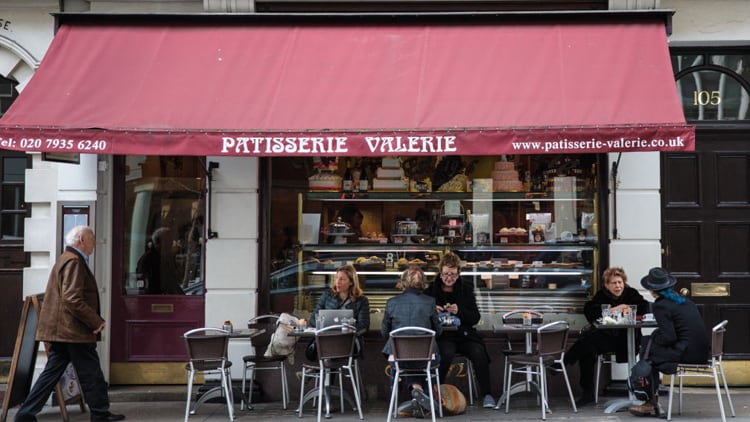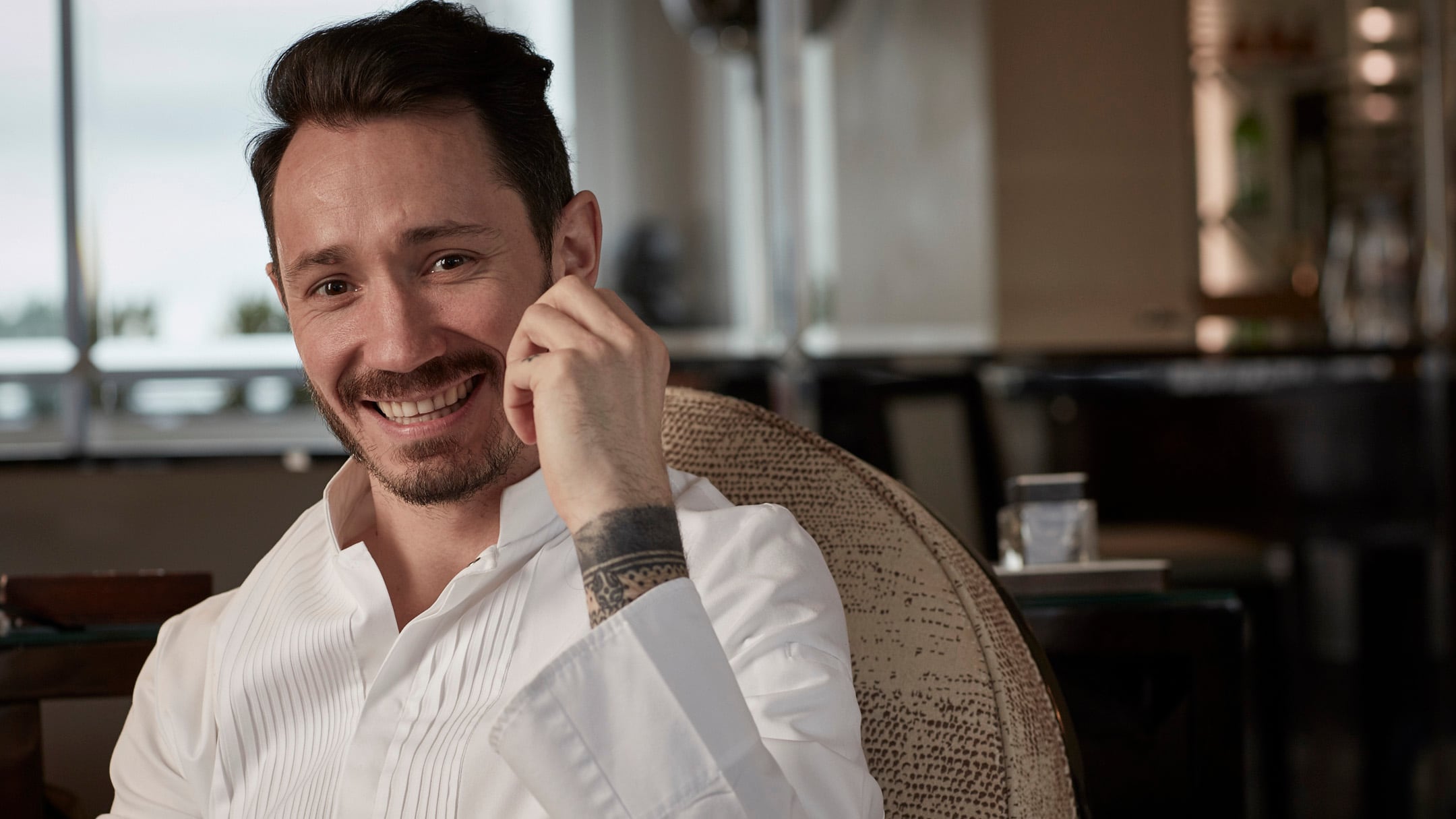Update: since this article was written, Harrods has announced that The French Collection series will not be going ahead. In a statement, Harrods said: "Due to unforeseen circumstances beyond our control, the French Collection – which was due to launch in-store on 19 July – will regrettably not be going ahead. We will be contacting all affected customers directly, and apologise profusely for any inconvenience caused."
This summer, four of the world’s best-known pastry chefs join forces at Harrods for The French Collection, a series of 10 day-long residencies in the store’s Tea Rooms. In August, Angelo Musa, executive chef at the Plaza Athénée, and Yann Couvreur, chef-patron of three Paris pâtisseries, will show off their skills, followed by Cédric Grolet, executive chef at Le Meurice, who takes over in September.
But before them, later this month, is Pierre Hermé, the acknowledged modern master of pâtisserie, whose career as a pastry chef started in his father’s boulangerie in Alsace. In 1976, aged just 14, he travelled to Paris to work for the most famous pâtissier in France, Gaston Lenôtre. A long stint in charge of pastry at upmarket food retailer Fauchon followed before he created his own brand, a business that now comprises more than 50 boutiques around the world. Three years ago Hermé was crowned Best Pastry Chef by The World’s 50 Best Restaurants. Described by Vogue’s Jeffrey Steingarten as the ‘Picasso of pastry’, he is most famous for reinventing the classic macaron, using his knowledge of flavour to take the crisp little almond-based classic to new heights.
In London for the press launch of the Harrods event, he sits in a small room next to the lavish Tea Rooms, a grand piano tinkling in the background, talking about coffee with Harrods executive pastry chef Markus Bohr, the man who has put The French Collection together. The pair first met 25 years ago, in Taipei, and have been friends ever since.
Hermé is fascinated by coffee – “coffee and tea are the best beverages to go with pâtisserie,” he says – and loves the precision that goes into making the perfect cup. “Baristas are like pâtissiers: I find them very easy to work with. They are very precise, they weigh everything.”
He has spent the morning visiting several coffee roasters, Monmouth and Rosslyn among them, and has spent a couple of hours with Bartosz Ciepaj, the Master Roaster at Harrods, working on the perfect coffee to infuse the cream in a millefeuille, one of the pastries on his July menu. “I don’t think I’ve ever met someone with such a deep knowledge of coffee. I was like a kid in a sweetshop.”
Hermé stresses the importance of top-quality ingredients, something drummed into him in his first months at Lenôtre. “I went there thinking ‘I know a little about pastry’, but this was on a different level from the family bakery. The kitchen had more or less the same equipment, just 100 times more of it.

“And my father had learned his trade in Switzerland, at the famous Richemont bakery school in Lucerne. His pâtisserie was from the Germanic tradition of ornate cakes sold by the slice: at Lenôtre, the pastry was much more precise.”
It was there that he learned to make gâteau Opéra, a layered cake of chocolate, coffee buttercream and almond sponge that had become a Lenôtre trademark. “Actually, although we made the tarte au café with proper ground coffee, we used Nescafé or coffee essence in the Opéra.
“When I made my own Opéra, I kept the same combination of flavours, but I incorporated more textures: a layer of caramelised puff pastry, a thin layer of chocolate, coffee butter cream – made with real ground coffee – and a layer of ganache. That’s why I call it ‘Opéra mon façon’: Opéra my way.”
According to Hermé, pâtisserie has evolved in other ways, too. “Not just in terms of dietary requirements – we have developed vegan and gluten-free pastries, for example – but also the public desire for less cream, butter and sugar, without sacrificing flavour. Lenôtre’s recipe for buttercream, for instance, involved whipped crème anglaise mixed with butter and Italian meringue. I have reduced the sugar by perhaps 60%.”
And, while the public may not have realised they had a taste for berce (hogweed) and lemon – “that sprang from a meal I had at Marc Veyrat’s restaurant 15 years ago” – giant hyssop and raspberry, or lovage with pineapple, Hermé’s mastery of flavour has persuaded their palates. One of his most famous creations is the Ispahan macaron, named after a kind of Damask rose from the Middle East: to partner the rose flavour of the biscuit, Hermé makes a white chocolate ganache flavoured with lychee.
Given that rose and lychee are two of the aromas often associated with Gewürztraminer, a grape variety that, like Hermé, has its roots in Alsace, did that inspire the combination? “It’s connected. I took wine lessons when I was young, which helped me to identify aromas not just in wine but in nature.
“I made my first cake with rose in 1987, after I discovered rose being used in Bulgarian cuisine. It had a bavarois cream and fresh raspberries, and I made it for the next 10 years. But it was very 1980s, without a great contrast of texture and flavour. When I decided to rethink it, I thought about the flavours in Gewürztraminer and that’s why I made the marriage with lychee.”
Hermé says his creativity is less about sudden flashes of inspiration, more to do with a constant evolution and a relentless perfectionism. A few years ago, for instance, the Ispahan macaron contained sweetened raspberry jelly. Now, he simply uses dried raspberries.
His empire continues to expand: even to the US, where Lenôtre tried and failed twice to open shops in New York and Houston. “But he did it on his own and the shops were the same size as in Paris, I think. We have partners, and we have just a small corner in Saks and a pâtisserie in the Delta One lounge at JFK’s Terminal 4”.
Does he see a bright future for the art of classic French pâtisserie? “For good pastries, yes.” And he is clearly delighted to be collaborating with his three Parisian confrères. “In fact, three of us – me, Cédric and Yann – have a common point: we all worked at Fauchon.” Not at the same time, though? He smiles, wryly. “No, not at the same time. I was a bit before.”
Isaphan macarons
Ingredients (makes about 72 macarons)
For the lychee and rose ganache
500g white chocolate (35% cocoa Valrhona)
65g cocoa butter (Valrhona)
290g lychee purée (Boiron)
85g whipping cream (35% fat)
4g alcohol-based rose essence (Sévarôme)
For the dried raspberries
150g fresh raspberries
For the rose macaron biscuit (a)
300g powdered almonds
300g icing sugar
110g egg whites, ‘liquefied’ *(see note)
4g liquid red carmine food colouring
For the rose macaron biscuit (b)
300g granulated sugar
75g mineral water
110g egg whites, at room temperature
Method
1. Briefly simmer together the cream and lychee purée. Put the chopped chocolate and cocoa butter to melt in the top of a double boiler. Pour the lychée cream over the melted chocolate in three stages, mixing each time. Add the rose essence and mix with a stick blender until smooth. Transfer to a baking dish and cool.
2. To dry the raspberries, preheat the oven to 90°C. Line a baking tray with parchment and spread the raspberries over it. Cook for 90 minutes or until dried.
3. Sift the icing sugar with the powered almonds, then, without mixing them, pour in the liquefied egg whites and add the food colouring.
4. Put the sugar in the water and heat to 118°C. As soon as the syrup reaches 115°C, start beating the second quantity of egg whites.
5. Pour the sugar (heated to 118°C) over the beaten egg whites. Whisk and allow to cool to 50°C. Fold into the almond mixture, letting the mass subside. Pour into a pastry bag with a plain tip (No 11 nozzle).
6. Pipe the mixture into circles (about 3.5cm in diameter) spaced at 2cm intervals on baking sheets lined with parchment. Tap the baking sheets on a work surface covered with kitchen towel to expel any big air bubbles. Leave for 30 minutes to allow the shells to form a crust.
7. Preheat a convection oven to 170°C. Bake for 12 minutes, opening the oven door twice, quickly, while they cook. Take baking sheets out of oven. Paint the shells with more red food colouring, then slide the sheets of parchment paper with shells onto a work surface to cool.
8. Pour the ganache into a pastry bag fitted with a No 11 plain tip. For each macaron, pipe ganache onto one shell, put a dried raspberry on top, then cover with a second shell. Refrigerate for 24 hours, and remove 2 hours before serving.
* Hermé leaves egg whites in the fridge for a week so that the albumen breaks down, the whites lose their elasticity and ‘liquefy’, making them much easier to beat into soft peaks without becoming grainy.
This is a web version of an article that first appeared in the July issue of Restaurant magazine, the leading title for the UK's restaurant industry. For more features, comment, interviews and in-depth analysis of the restaurant sector subscribe to Restaurant magazine here.




